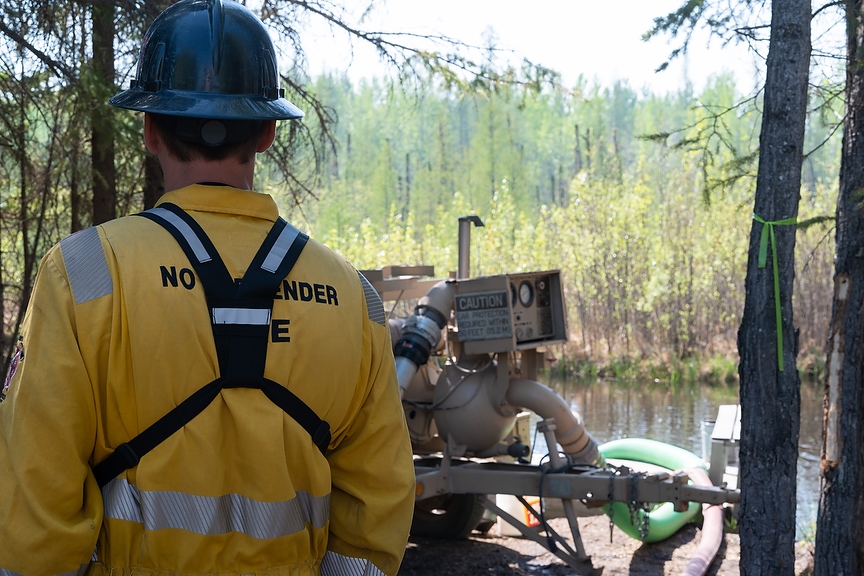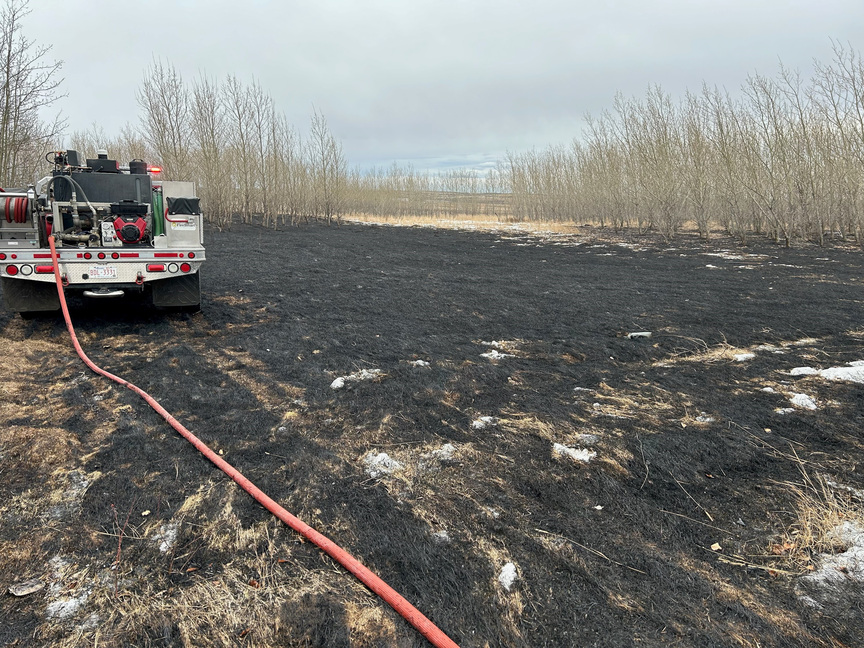
The recent snowfall of up to 25 cm across the South Peace has proved to be good news for wildfire efforts.
“We, thank goodness, got snow on the weekend,” said Grande Prairie wildfire information officer Kelly Burke.
A significant lack of precipitation throughout the winter months was a cause of concern ahead of the wildfire season, prompting the province to announce a head start Feb. 20.
Dry conditions and high winds in the Grande Prairie area last week didn’t help.
By Friday, “we saw six fires take off in the wind,” Burke said.
A fire advisory for the County of Grande Prairie and the towns of Beaverlodge, Sexsmith and Wembley issued Feb. 23 was lifted Monday, Feb. 26.
The snowfall “really put those fires down,” said Burke,
“If the weather continued, we would be in another situation right now. We probably would have a fire ban at this point and be asking for crews from other provinces. With the snow that we got, it really helped.”
Minister of Forestry and Parks Todd Loewen announced Feb. 20 as the start of wildfire season, 10 days earlier than usual.
Burke said there have been six fires reported in the Grande Prairie Forest Area (GPFA) since the beginning of 2024, burning nearly 74 hectares. Ten fires are currently burning in the GPFA and six of these are carryover fires from last year.
As of press time, 27 new fires have started since Jan 1 across Alberta and there are 55 active wildfires.
The early start gives the government more time to get firefighter training started and place fire service workers into job positions earlier, including seasonal guardians who issue fire permits for landowners, said Burke.
Forestry and Parks has requested additional funding this year from the province to hire 100 more firefighters.
In the meantime, Burke said active recruiting efforts are ongoing.
“We also have increased numbers of support positions,” she said. “That would be camp supervisors and air tanker loader men and people who work in the warehouse and logistics.”
Burke credited the dry winter with the early blazes. Without precipitation, dry ground and grass are fuels which can spread flames quickly.
Burke said residents to check in with their local municipality in regard to fire advisories.
Heading into spring is “the most dangerous time of year to burn debris,” she said.
“There’s lots of dry grass, lots of fuel available, but there's no green grass, and there's no green leaves on the trees.
“A lot of people just think, ‘oh, I’ll just burn a little bit of grass,’ but it travels very quickly and the flame length can be very long.”
County of Grande Prairie Fire Service district fire chief Matt Smith said the early start is “nerve-racking,” but said the county fire service has been anticipating the season ahead.
“We’ve all been here all winter,” he said.
“We’ve all seen the lack of precipitation, we’ve heard the forecast and we’ve dealt with the fire season last year. We’re well aware of the risks at hand.”
“As spring nears closer and closer, we’re really urging the public that have done burnings to really be keeping a close eye on it, and to put that extra attention into making sure they put their fires out before we get the dry season,” Smith said.
“Some of those fires that people may have lit in the early winter, when there was some snow, will burn underground.
“We just want to avoid any chance of a new fire starting and let’s hope for a nice quiet fire season this year.”
